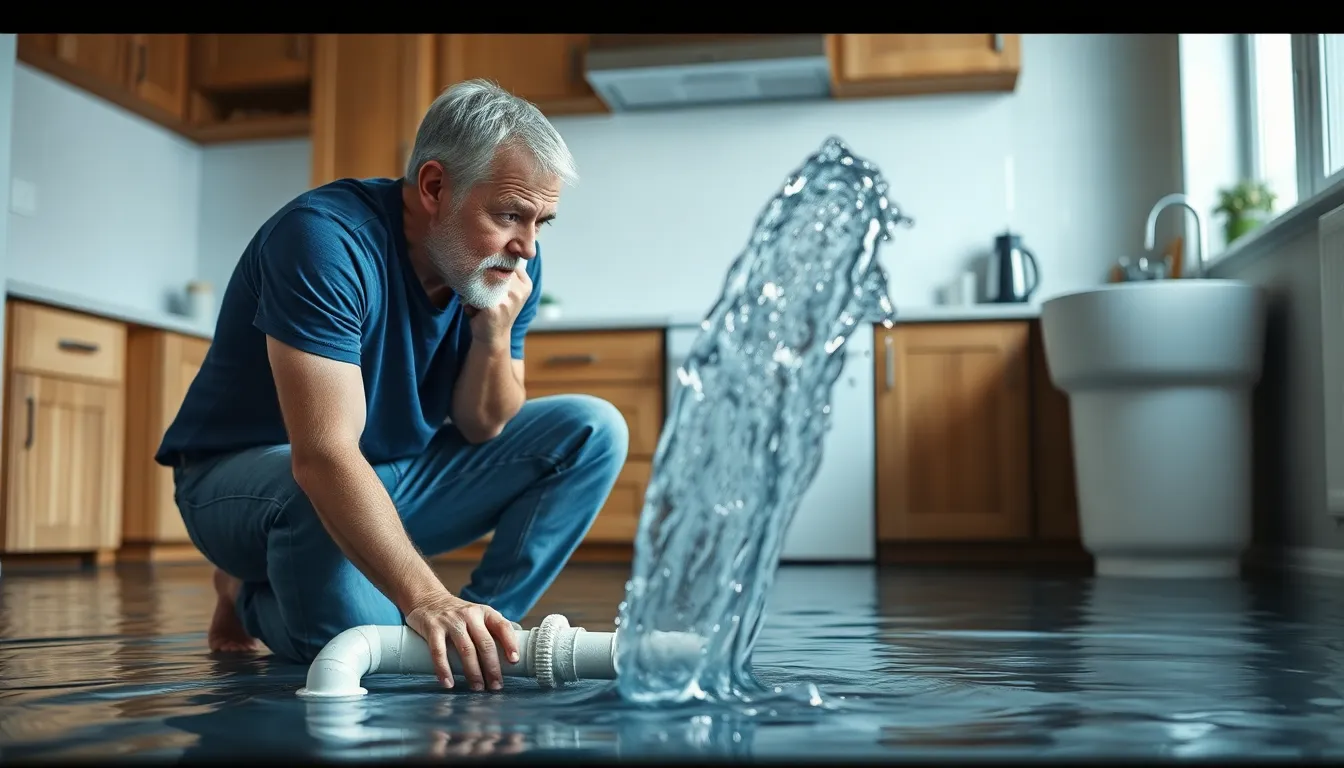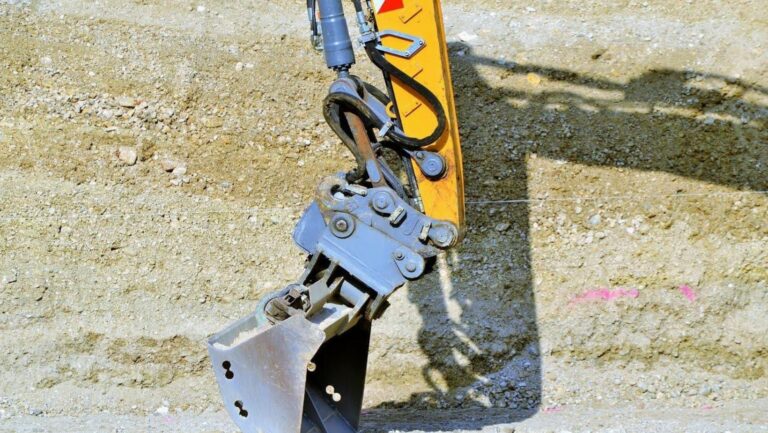When disaster strikes, emergency repairs become crucial in safeguarding homes and businesses. Whether it’s a burst pipe flooding a basement or a sudden roof leak during a storm, these urgent situations demand immediate attention. Knowing how to act quickly can make all the difference in minimizing damage and restoring normalcy.
Understanding the importance of emergency repairs not only prepares individuals for unexpected challenges but also highlights the value of having a reliable repair service on speed dial. Being proactive can save time, money, and stress when facing unforeseen circumstances. In this article, readers will explore essential tips and strategies for handling emergency repairs effectively, ensuring peace of mind when the unexpected occurs.
Table of Contents
ToggleUnderstanding Emergency Repairs
Emergency repairs address urgent situations requiring immediate attention to prevent further damage. These repairs are essential for restoring safety and functionality in homes and businesses.
Definition of Emergency Repairs
Emergency repairs are necessary actions taken to fix sudden and unexpected issues. They typically involve infrastructure failures, such as plumbing bursts, electrical outages, or structural damage from storms. These repairs aim to mitigate risks to life and property.
Importance of Timely Action
Timely action in emergency repairs significantly reduces the extent of damage. Prompt response prevents small issues from escalating into costly repairs. For example, addressing a leaky pipe within 24 hours can save thousands in water damage restoration. Quick intervention also ensures safety by minimizing hazards like electric shock or fire risks, providing peace of mind during crisis situations.
Common Types of Emergency Repairs

Emergency repairs can arise from various critical situations, each requiring swift action. The following sections outline the most common types of emergency repairs.
Plumbing Emergencies
Plumbing emergencies often involve burst pipes, overflowing toilets, or severe leaks. These situations demand immediate attention to prevent extensive water damage. For instance, a burst pipe can release hundreds of gallons of water every hour. Attending to these issues within one day can save thousands in restoration costs. Common steps include turning off the water supply, assessing the damage, and contacting a licensed plumber for prompt service.
Electrical Emergencies
Electrical emergencies encompass outages, exposed wires, or malfunctioning appliances. These scenarios pose safety risks, such as fire hazards or electric shock. Quick action is vital; for example, in cases of flickering lights or tripped circuit breakers, turning off affected appliances and consulting a licensed electrician is essential. Ensuring proper function of electrical systems maintains safety and operational efficiency.
HVAC Emergencies
HVAC emergencies primarily involve complete system failures, refrigerant leaks, or unusual noises. These problems can lead to uncomfortable living conditions or increased energy bills. Swift response is crucial; for instance, overheating systems can cause damage to components if not addressed promptly. Regular maintenance checks can help prevent emergencies, but when they occur, contacting a certified technician ensures quick and effective repairs.
How to Identify an Emergency Repair
Identifying an emergency repair involves recognizing specific signs and determining the urgency of the situation. Understanding these indicators allows for swift and effective action.
Signs That Require Immediate Attention
- Water Damage: Noticeable water pooling or dripping from ceilings, walls, or floors indicates a plumbing emergency that requires prompt attention.
- Electrical Issues: Flickering lights, frequent circuit breaker trips, or burning smells from outlets suggest electrical hazards that necessitate immediate intervention.
- Structural Integrity: Cracks in walls, sagging ceilings, or doors that won’t close properly point to potential structural damage that could pose safety risks.
- Gas Leaks: The smell of gas or hissing sounds near appliances or pipes demands immediate action, as these situations can lead to explosions or fire.
- Heating and Cooling Failures: HVAC system breakdowns in extreme temperatures impact comfort and safety, signaling a need for urgent repairs.
Prioritizing Repairs
- Assessing Severity: Evaluate the level of risk associated with the issue; prioritize situations endangering life or property.
- Identifying Impact: Determine how the repair affects daily life and operations. Issues disrupting essential services like water or electricity rank higher.
- Coordinating Resources: Contact professionals based on the priority level, ensuring qualified help is dispatched swiftly to address the most critical repairs first.
- Planning for Future: After immediate concerns are resolved, consider preventive measures to avert similar emergencies in the future, reducing the likelihood of urgent issues arising again.
Finding a Reliable Professional
Identifying a dependable professional for emergency repairs is crucial. Quick access to qualified help minimizes damage and restores safety efficiently.
Tips for Choosing the Right Contractor
- Research Credentials: Verify licensing and insurance status. Professionals should hold the necessary certifications to perform emergency repairs.
- Check Reviews: Assess online reviews and testimonials. Positive feedback from past clients indicates reliability and quality of service.
- Evaluate Experience: Consider the contractor’s experience with similar emergencies. Experienced professionals handle unexpected issues more effectively.
- Request Estimates: Obtain detailed estimates from multiple contractors. Transparent pricing ensures no unexpected fees arise during the repair process.
- Inquire About Warranties: Ask for guarantees on workmanship and materials. Warranties provide assurance that the repairs meet quality standards.
- Availability: Confirm the contractor’s availability for urgent situations. Prompt response times are essential during emergencies.
Questions to Ask Before Hiring
- What are your credentials?: Request information about licensing, certifications, and insurance coverage.
- How long have you been in business?: Inquire about the contractor’s experience and history in handling emergency repairs.
- Can you provide references?: Ask for contact details of previous clients to verify the quality of work.
- What is your response time for emergencies?: Understand how quickly they can respond to urgent repair needs.
- What processes do you follow for emergency repairs?: Review the steps they take to manage repairs and ensure safety.
- Are your estimates fixed?: Clarify if there’s flexibility in pricing or if estimates are binding.
- What warranties do you offer?: Find out what guarantees are in place for both workmanship and materials used in repairs.
Cost Considerations
Urgent repairs often carry significant expenses, influenced by various factors. Understanding these cost determinants helps in preparing for potential financial impacts.
Factors Affecting Emergency Repair Costs
- Type of Repair: Different emergencies incur varied costs. For instance, plumbing repairs for burst pipes usually range from $300 to $1,500, while electrical repairs can vary from $200 to $2,000, depending on the complexity and severity.
- Location: Geographic region significantly influences prices. Urban areas often experience higher labor rates than rural locations due to demand and living costs.
- Time of Day: Emergency repairs during non-business hours typically attract additional fees. After-hours services can increase the standard rate by 25% to 50%, depending on the contractor’s policies.
- Severity of Damage: The extent of damage determines repair costs. Minor leaks might require only patching, while extensive flooding could necessitate structural repairs and restoration, potentially costing thousands of dollars.
- Materials Needed: The choice of materials impacts overall expenses. High-quality or specialized components can increase costs significantly, especially in plumbing and HVAC repairs.
- Contractor Rates: Different contractors charge varying hourly rates. Conducting research to compare fees can lead to better financial choices and scope of work tailored to budget constraints.
Budgeting for Unexpected Repairs
- Emergency Fund: Establishing an emergency fund specifically for repairs is crucial. Financial experts recommend saving 3% to 6% of a home’s value for unforeseen issues.
- Assign Priorities: Prioritize repair needs based on urgency and potential damage. Significant issues like gas leaks require immediate action, while minor aesthetic repairs can be scheduled later.
- Get Estimates: Obtaining multiple estimates before a repair occurs can aid in effective budgeting. Estimates provide insights into average costs and help identify competitive pricing.
- Include Contingencies: Budget for potential overruns by including a contingency fund of 10% to 20% over the initial estimated costs. This buffer accommodates unforeseen complexities.
- Insurance Review: Adjusting homeowner’s insurance to cover specific emergency repairs can mitigate costs. Reviewing policies regularly helps ensure adequate coverage for various potential emergencies.
Emergency repairs play a vital role in safeguarding homes and businesses from unexpected disasters. Quick action can significantly reduce damage and restore normalcy, ensuring safety and functionality. Recognizing the signs of an emergency and having a reliable repair service on hand is essential for effective management.
Planning ahead and budgeting for potential repairs can alleviate financial stress during crises. By prioritizing maintenance and understanding the urgency of various issues, individuals can make informed decisions when faced with emergencies. Embracing these strategies not only protects property but also provides peace of mind in challenging situations.



